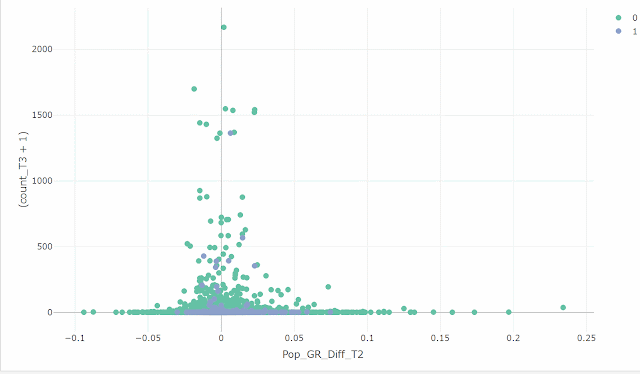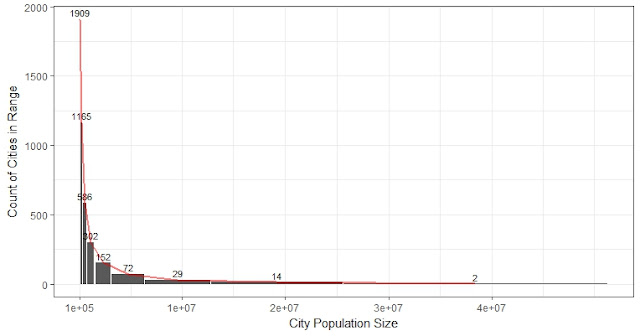Conflicts occur in stagnant places
My frequency of update drops to almost once a week, which is not so good. I shall find more interesting topics to discuss.
An interesting observation today is that cities with more conflicts close to it tend to be cities with population growth rates close to the national average of the country where the city is located. In my opinion, these cities simply get stuck in where they were. Since population associates strongly with city GDP, a city compromised by conflicts is associated with stagnant population and sluggish economic development.
This figure below has the count of conflicts on the y-axis, and city population growth rate difference from national average (e.g. growth rate of New York minus the average growth rate of United States) on the x-axis for 4,231 cities. Green and blue dots represent cities in developing and developed countries respectively in around 2014.
An interesting observation today is that cities with more conflicts close to it tend to be cities with population growth rates close to the national average of the country where the city is located. In my opinion, these cities simply get stuck in where they were. Since population associates strongly with city GDP, a city compromised by conflicts is associated with stagnant population and sluggish economic development.
This figure below has the count of conflicts on the y-axis, and city population growth rate difference from national average (e.g. growth rate of New York minus the average growth rate of United States) on the x-axis for 4,231 cities. Green and blue dots represent cities in developing and developed countries respectively in around 2014.
Using City GDP or GDP per capita shows a similar trend that cities with more conflicts also tend to have GDP per capita difference from its national average close to zero. The case is the same for GDP.





Comments